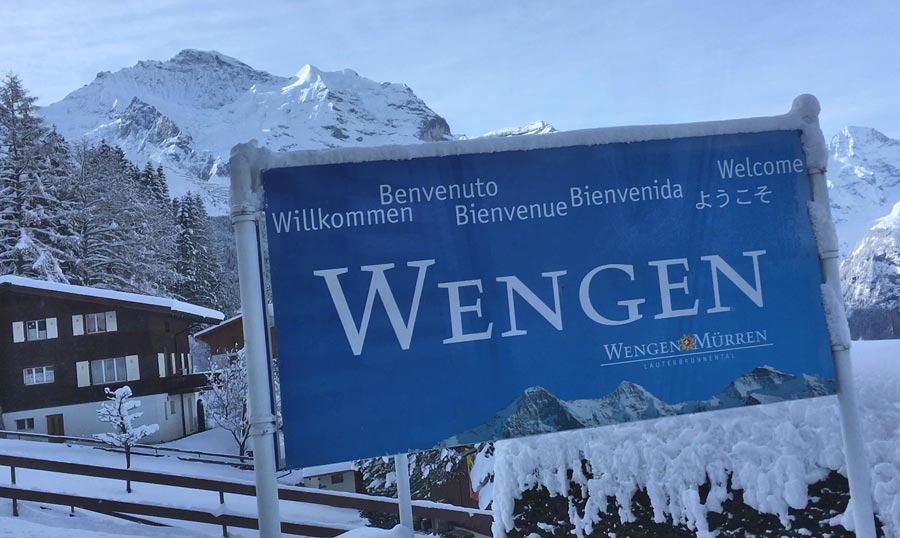Holiday4.com
Contact
letstalk@holiday4.comIn this article, we focus on leisurely European winter trail walking - as an alternative or in addition to winter sports and skiing holidays. We also look at winter trail hiking options and the non-skier facilities offered by alpine regions and ski resorts.
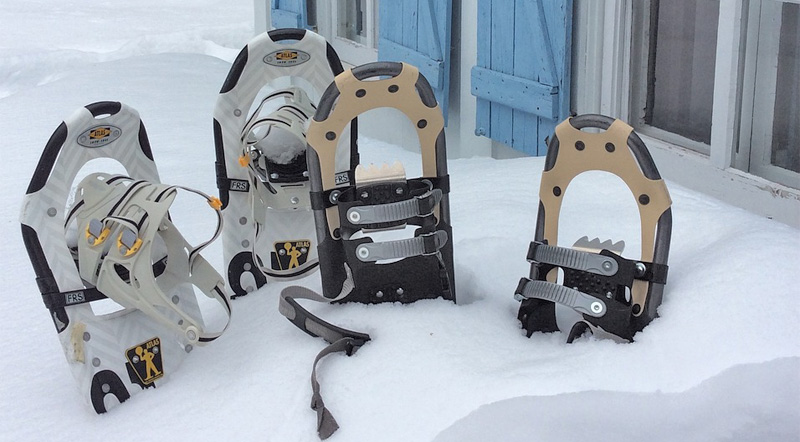
1. What are Alpine Winter Walking Holidays?
Winter sports holidays are not just for skiers - there are plenty of other experiences, activities and adventure holidays just waiting to be discovered. In our opinion, there is no better way to appreciate the magic of the mountains than on a winter's hike, preferably on a crisp, clear day and with snow crunching underfoot.
Skiing holidays are great fun, but try and take a break from skiing and check out the peaceful and well-maintained hiking trails surrounding most mountain resorts. There are few better ways to experience the majestic peaks and dramatic views of the Alps than to walk a network of scenic winter trails. Mountain trails provide access to a 'calm and peaceful wonderland' of magnificent mountain landscapes, snow-covered valleys, twinkling forests and frozen waterfalls - memorable experiences are guaranteed - as you walk from one picturesque snow-covered village to the next.
2. What are the Alps and where are they?
The Alps are a massive mountain range that forms an arc from Nice to Verona in south-central Europe. They stretch for around 750 miles (1,200 kilometres) and measure 125 miles wide at their widest point, between Garmisch-Partenkirchen in Germany and Verona in Italy. The Alps cross eight countries (known as Alpine States), including France, Switzerland, Monaco, Italy, Liechtenstein, Austria, Germany, and Slovenia.
Switzerland (a Holiday4 favourite destination) has the highest concentration of mountains, with around 59% of the country covered by the Alps, from Lake Geneva in the west to the Austrian border in the east. The Swiss Alpes is home to Europe's highest railway station, the Jungfraujoch. The Jungfraujoch station is located at an altitude of almost 3,500 meters - its construction (through parts of the Eiger mountain) is regarded as a pioneering technical achievement.
The tallest alpine mountain is Mont Blanc (White Mountain), with an elevation of 15,780ft / 4,809m. Mount Balnc lies between France and Italy and remains snow-capped throughout the year. The prettiest and most accessible mountain region (by rail) is the Jungfraujoch in Switzerlands' stunning Bernese Alps - with Swiss ski resorts in this area making up one of the most expensive alpine regions for real estate.
3. The best Alpine ski resorts for winter walking holidays
Our favourite ski resorts offer a good network of leisurely walking trails, plus plenty of non-ski activities. Winter walking trail types include short resort trails, long trails, trails that use lift systems, high-altitude trails, and trails that weave along the valley floor. Trails attached to mountain resorts and ski regions are usually well-marked, well-maintained and often accessible using local transport systems.
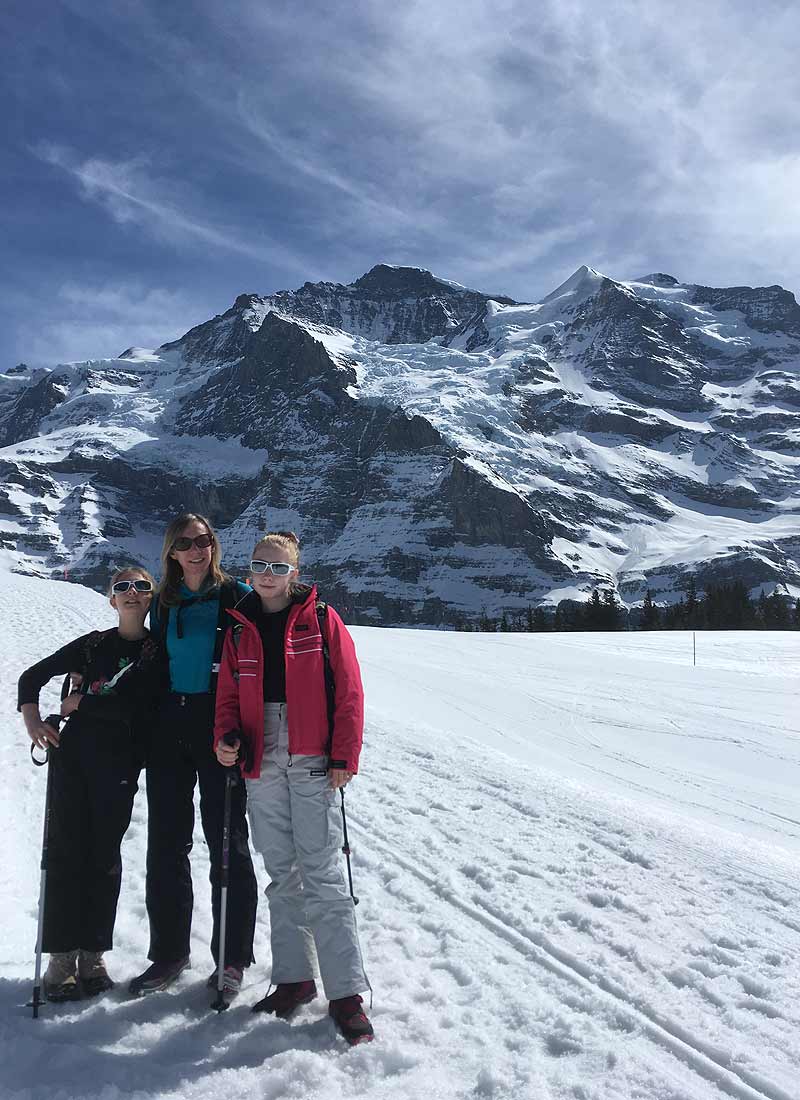
Ski resorts good for walking
The following ski resorts offer good walking trails. They also provide good facilities when lifts and trails are closed due to weather.
- Wengen, Switzerland.
- Seefeld, Austria.
- Kitzbühel, Austria.
- Chamonix, France.
- Zermatt, Switzerland.
- Interlaken, Switzerland.
- Morzine, France.
- St Anton, Austria.
Larger ski resorts tend to support more walking trails and non-ski activities.
4. Tips for Choosing a Winter Hiking Holiday Resort
Choose a mountain resort offering a wide variety of well-managed and well-signposted trails. Also, look for a good mix of alternative snow-based activities and general leisure facilities (see list below). Most tourist information centres provide basic walking maps, route guides, trail suggestions, and trail grading. Some mountain resorts organise guided walks, and some can be arranged via your tour operator or holiday company; either way, local guided walks are usually a safe and quick way of getting to know a particular ski resort, mountain range or region.
Climate plays an 'important' role in European winter hiking holidays, with the type of activity you choose being 'largely dependent' on local weather conditions. When selecting a winter mountain resort, look for one that provides a variety of ski and non-ski activities, such as good transport links to nearby towns for shopping and days out, plus indoor sports facilities such as skating and curling, swimming and other leisure centre type options. Resort-based tobogganing, snowshoe trailing, plus cross-country lessons are all ideal for those wintery days when walking trails and ski runs are closed higher up due to bad weather conditions.
Our favourite Swiss and Austrian walking resorts
- WENGEN, Switzerland. Car-free Wengen has an elevation of 1,274 m (4,180 ft) above sea level and sits perched above the Lauterbrunnen Valley in the middle of the Berneses Alps. Wengen has breathtaking mountain views, a hi-tech and efficient mountain rail network, a central cable car and lift system, and a network of interlinked and varied walking trails.
Non-ski activities include an ice rink, cinema, easy rail access to Jungfraujoch - (Top of Europe), and good rail links to nearby resorts of Grindelwald (for walks), Murren (for views) and Interlaken (for shopping). Our favourite hikes include the 3.5km Wengen to Hunneflue for views over the valley (see bottom pic), Kleine Scheidegg to Wengen 6km, and Mannlichen to Kleine Scheidegg 8km.
- SEEFELD, Austria. Stunningly scenic Seefeld sits at an altitude of 1,200 metres. You'll find 142 kilometres of well-prepared and well-signposted winter hiking trails, providing a variety of routes and ability ranges, with many starting from the centre of the resort. Our favourite non-ski facilities include 35 kilometres of medium-ability snowshoe hiking routes, with trail durations ranging from 1 to 4 hours. Other activities include guided snowshoe hikes and cross-country skiing trails; there are also 8 thrilling toboggan runs to choose from, ranging in ability from medium to challenging. Resort facilities include a swimming pool, indoor tennis courts, a bowling alley, a cinema and a casino. Nearby Innsbruck (the city in the Alps) is just 30mins away by road, it's also the capital of Austria's western state of Tyrol. Innsbruck has lots to offer, including an impressive historic old town and great shopping - it's an enjoyable day out should you need a rest bite from the slopes and trails.
The picture below is of a snowy Lauterbrunnen Valley - it was taken late March around 10 am on an early-stage downhill walk from Wengen to Lauterbrunnen 3.2km (1 h 45 min). Our trek continued along the valley to the spectacular 300-meter-high Staubbach Falls (30 mins). The best time of year to visit Staubbach Falls (for the most water flow) is in May or June, March has just a trickle, but it's still beautiful close-up.
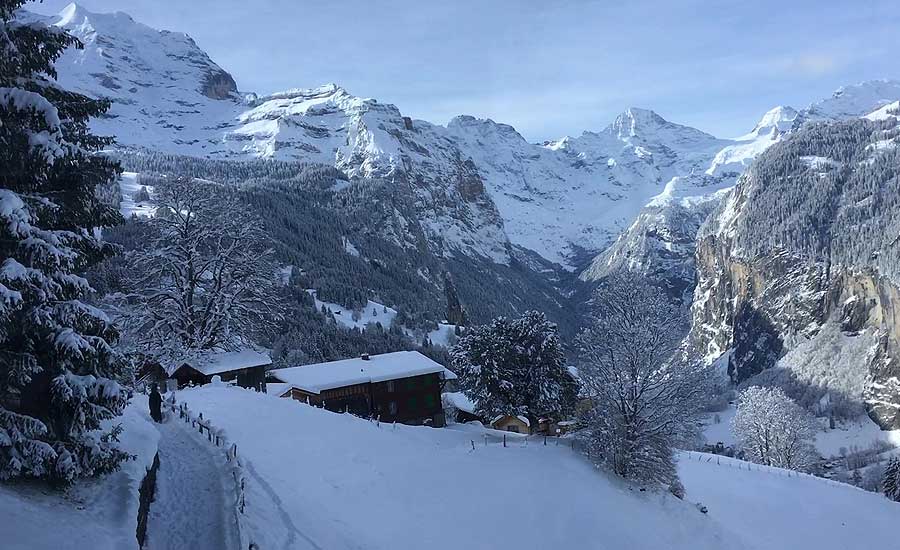
5. The best time of year for walking in the Alps
A popular time of year to walk in the Alps is from late June to September, with July and August being the busiest months for mountain trails and their stunning vantage points. However, mid-summer also means possible long queues for mountain transport and lift systems (especially around popular summer mountain resorts), so while summer months offer more stable weather conditions, walking in winter can be just as thrilling but with less queuing.
If you're fortunate with weather conditions, trekking along well-marked winter trails through ski resorts and snowy mountainous regions can be a gratifying experience. However, remember that winter temperatures can drop to as low as -20⁰C, so it's essential to come prepared with appropriate clothing and gear. The late winter season may offer better temperatures and clearer skies; however, late-season holidays carry the risk of closed ski runs and limited access to walking trails (due to trail maintenance and poor or unstable conditions), which can happen towards the end of the winter season and as mountains start to warm back up.
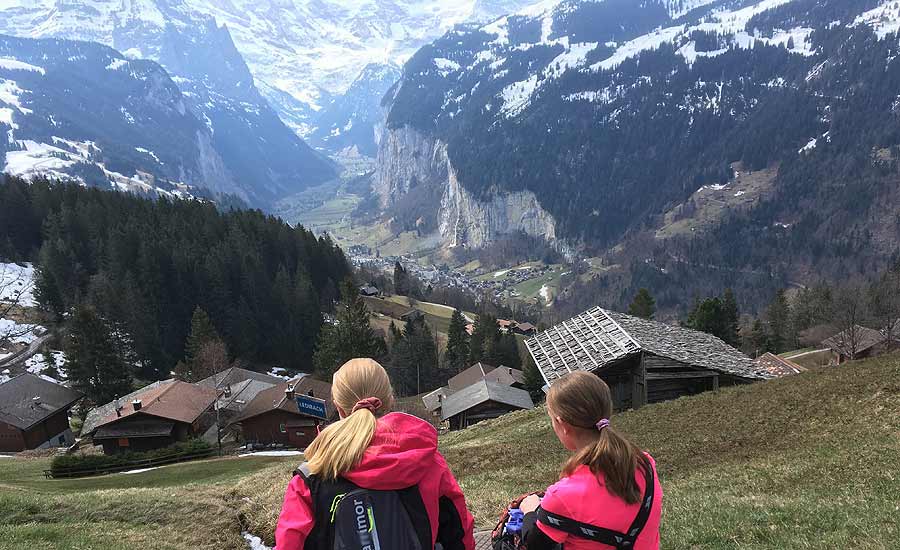
The late winter season is my favourite time in the Alps - it tends to be quieter (and slightly cheaper), try and keep clear of Easter holiday weekend as lift systems can get busy with local skiers, especially if snow conditions remain good higher up. Top Tips: Some resort facilities, shops, bars and restaurants can close early towards the end of a season, so if you like everything to be open, contact the resort office for their official close dates. Also, transport and lift systems can temporarily close towards the end of winter for maintenance; before reopening for the spring and summer - (Nowadays, more mountain resorts are staying open between seasons).
6. Safety Tips for winter alpine walking
Accidents can happen, so when walking in the Alps, consider wearing a lightweight Safety Helmet (they come in a 'variety' of shapes, sizes and comfort levels and are not overly expensive). Winter alpine walking on official well-maintained trails while taking relevant precautions and wearing appropriate clothing and footwear is nearly always a 'highly enjoyable' experience; however, some walking routes can run parallel with ski runs and can even share the same piste in places, which can heighten the risk of collision and injury, especially, the closer you get too busy ski resorts and mountain restaurants.
Also, look out at busy rail and cable car stations, including ski lifts and any place where people carry their skis and poles, as they can quickly turn into potential hazard zones - you'll be surprised how many people get bumped on the head by a miss-handled ski, especially when everyone starts scrambling for a lift, or for a train back up the mountain.
Remember, do not take on a technically challenging hiking trail; unless you have the appropriate skills, kit and experience. Before starting your walk, check the weather forecast, avalanche risks and trail conditions, and always check the trail suitability level for each route you intend to take. See the resort information office or your holiday tour operator for further details.
7. What are Snowshoes and when to use them?
A snowshoe is a wide meshed frame with adjustable hinged bindings that easily attach to the bottom of walking boots. The large footprint frame spreads the user's weight evenly over a larger area (known as floating), allowing you to travel across snow-covered terrain without sinking too far.
Snowshoes are not often used on the well-prepared and well-maintained walking trails found snaking around most mountain resorts; they are 'mainly used' on higher elevations with heavier and powdery snowfall or on dedicated snowshoe trails. In deep snow conditions, snowshoes are vital in preventing you from sinking too far into the snow - allowing you to travel 'largely' on top - with little to no fuss.
Snowshoe hiking has become increasingly popular throughout the Alps, with many resorts providing snowshoe rentals, should local conditions require them. Many ski resorts have introduced new or extended snowshoe hiking trails to allow access to carefully chosen and sometimes more remote mountain areas. These trails often provide a 'greater feeling of freedom' and 'close to nature' experiences.
Top Tips: Always use official snowshoeing trails and always carry a trail map. Use resort-suggested routes and take part in snowshoe-guided walks if available - try not to veer off track and check trail conditions daily with the resort office.
8. Non-ski activities and resort facilities
There are plenty of non-ski activities to help you enjoy your surroundings. The following activities are available at selected resorts across the Alps:
Holiday Options
Non-ski mountain activities:
(1). Zipline & mountain aerial rides.
(2). Dedicated toboggan runs.
(3). Snowmobiling lessons and trails.
(4). Guided walks & snowshoeing trails to the best local viewing points.
(5). The use of cable cars and ski lifts (for non-skiers) to help reach mountaintops - making high-up hiking trails and viewing stations more accessible.
Non-ski resort activities and facilities:
(1). Horse-drawn sleigh rides.
(2). Husky dog sledging.
(3). Wellness, mindfulness and meditation courses.
(4). Good transport links to nearby ski resorts & towns (should local walk routes be closed).
(5). Indoor leisure centre & spa treatments.
(6). Spend more time in cafes and bars, especially those with an authentic alpine feel.
